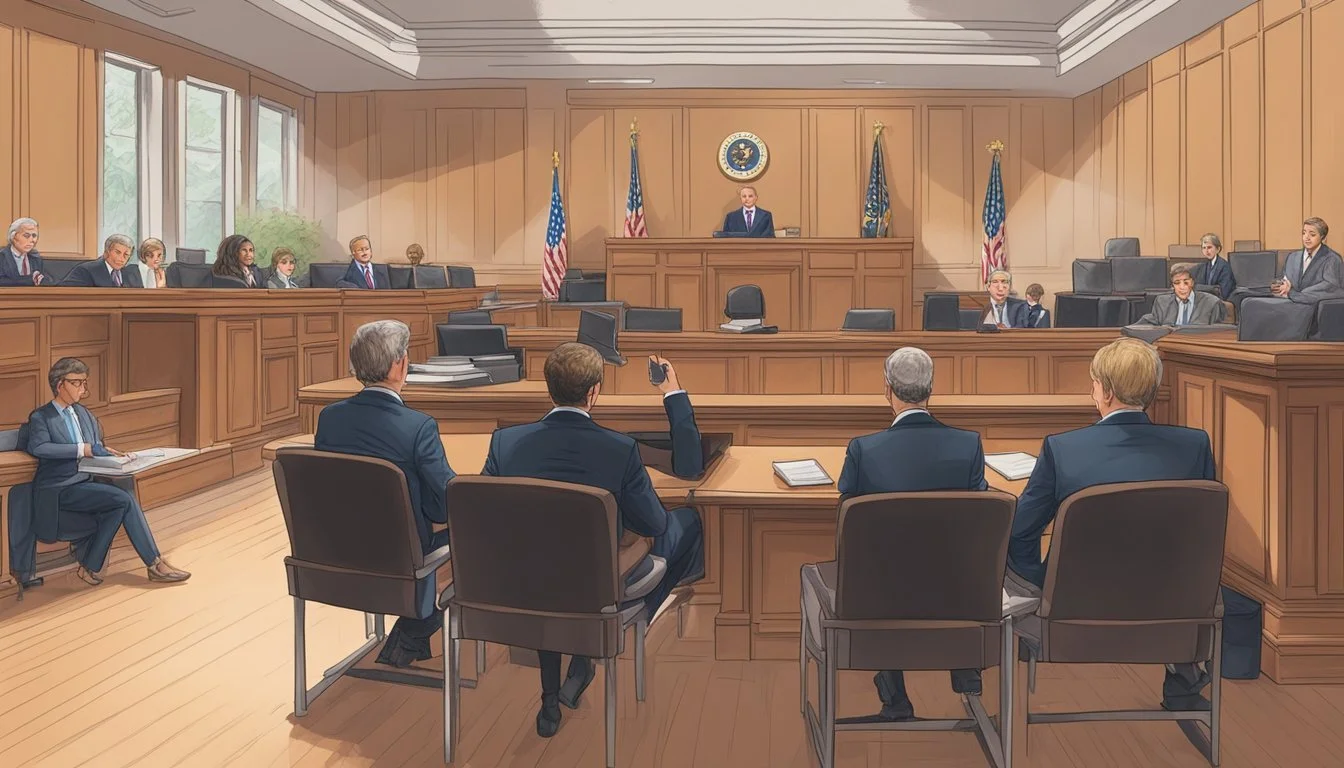Netflix Bombshell: JonBenét's Killer Unmasked? Shocking New Evidence Rocks Cold Case
The JonBenét Ramsey case continues to captivate public interest nearly three decades after the tragic murder of the 6-year-old beauty queen. As 2024 draws to a close, new developments have emerged in this long-unsolved mystery.
A dedicated Cold Case Team has uncovered pivotal evidence that could potentially identify JonBenét's killer. This breakthrough has reignited hope for justice and closure in a case that has baffled investigators for years. John Ramsey, JonBenét's father, now 80 years old, recently shared a bombshell update regarding the investigation.
The Boulder Police Department has also provided an update on the case as it approaches its 28th anniversary. While details remain limited, sources indicate that progress is being made in the ongoing investigation. These recent developments have brought renewed attention to one of America's most infamous unsolved murders.
Historical Context of the Case
The JonBenét Ramsey case shocked the nation in 1996, becoming one of the most infamous unsolved murders in American history. It involved a young beauty pageant contestant, a wealthy family, and a complex crime scene that puzzled investigators for decades.
The Ramsey Family
JonBenét Ramsey was born on August 6, 1990, to John and Patsy Ramsey in Atlanta, Georgia. The family, including older brother Burke, moved to Boulder, Colorado in 1991. John was a successful businessman, while Patsy was a former beauty queen who encouraged JonBenét's participation in child beauty pageants.
The Ramseys were prominent members of Boulder society. Their wealth and social status would later become a point of scrutiny in the investigation and media coverage.
Discovery and Initial Investigation
On December 26, 1996, Patsy Ramsey called 911 to report her daughter missing. She claimed to have found a ransom note demanding $118,000 for JonBenét's safe return. Hours later, John Ramsey discovered JonBenét's body in the basement of their home.
The Boulder Police Department faced criticism for their handling of the crime scene. Investigators allowed friends and family to move freely through the house, potentially contaminating evidence. This misstep would complicate the investigation for years to come.
Media Frenzy and Public Perception
The case quickly captured national attention. JonBenét's status as a child beauty queen, combined with the mysterious circumstances of her death, fueled intense media coverage. News outlets broadcast images of the six-year-old in full pageant attire, sparking debates about child beauty pageants.
Public opinion was divided on the Ramseys' potential involvement. Some viewed them as grieving parents, while others suspected their complicity. The media scrutiny put enormous pressure on both the family and the investigators.
Tabloids and TV specials offered conflicting theories, further muddying the waters of public perception. The case became a cultural phenomenon, inspiring books, documentaries, and countless armchair detectives.
Timeline of the Investigation
The JonBenét Ramsey case has seen many developments over nearly three decades. Key phases include the initial police response, advancements in forensic analysis, and shifts in investigative priorities.
Early Stages of the Police Inquiry
On December 26, 1996, Boulder police responded to the Ramsey home after JonBenét was reported missing. Officers conducted an initial search but failed to secure the crime scene properly.
The body was discovered in the basement later that day. Investigators collected evidence and interviewed family members.
A controversial ransom note found in the home became a focal point. Handwriting analysis and linguistic examinations were conducted to identify the author.
In the following months, police faced criticism for their handling of the case. Tensions arose between investigators and the District Attorney's office over differing theories.
Introduction of DNA Evidence
In 2003, DNA testing revealed an unknown male genetic profile on JonBenét's clothing. This discovery shifted the investigation's direction significantly.
The DNA did not match any family members or known suspects. It was entered into the FBI's Combined DNA Index System (CODIS) for potential future matches.
Advanced DNA techniques were applied in 2008, further refining the genetic profile. This led to the exoneration of the Ramsey family members as suspects.
Genetic genealogy methods, which had solved other cold cases, were later considered for the Ramsey investigation.
Shifts in Investigative Focus
Over the years, the focus of the investigation has alternated between intruder and family-involvement theories. Each new lead or piece of evidence prompted reassessments.
In 2009, Boulder police took back the case from the District Attorney's office. They formed a new task force to review all evidence.
Recent years have seen increased collaboration with outside agencies. The FBI and Colorado Bureau of Investigation have provided additional resources and expertise.
In 2022, investigators announced plans to use new DNA testing methods on evidence. They expressed cautious optimism about potential breakthroughs.
Advancements in Forensic Technology
Recent breakthroughs in DNA analysis and forensic techniques have revolutionized cold case investigations. These advancements offer new hope for solving long-standing mysteries like the JonBenét Ramsey case.
The Role of DNA Experts
DNA experts now employ cutting-edge technologies to extract and analyze genetic material from minuscule samples. Advanced DNA sequencing methods can identify individuals from previously untestable traces. These experts use sophisticated software to compare genetic profiles against expanded databases.
Forensic scientists can now detect DNA on items that were once considered unlikely sources. This includes weathered evidence and objects that have been handled by multiple people. The increased sensitivity of DNA tests allows for the separation of mixed samples, potentially revealing new leads in complex cases.
Impact on Cold Case Resolution
Cold case review panels are leveraging these new forensic tools to reexamine unsolved crimes. The JonBenét Ramsey case has garnered renewed attention due to these technological advancements. John Ramsey, JonBenét's father, has advocated for the use of advanced DNA technology to solve his daughter's 1996 murder.
Law enforcement agencies are now able to extract more information from limited evidence. This has led to breakthroughs in cases that were once considered unsolvable. The increased accuracy and reliability of forensic science have also strengthened the credibility of DNA evidence in court proceedings.
As a result, many cold cases are being reopened and reinvestigated. The combination of improved forensic techniques and dedicated cold case units has brought closure to numerous families and communities affected by unsolved crimes.
The Role of Media and Documentaries
Media coverage and documentaries have played a significant part in shaping public perception of the JonBenét Ramsey case. They have both informed and influenced ongoing interest in the unsolved murder.
Coverage of the Case Over Time
The JonBenét Ramsey case sparked an immediate media frenzy in 1996. News outlets provided extensive coverage, often sensationalizing details and speculating about potential suspects. Over the years, the case has remained in the public eye through periodic news updates and anniversary reports.
Print media and television news regularly revisited the story, keeping it alive in public consciousness. Tabloids frequently published unverified claims and theories, further fueling public interest and controversy.
As digital media emerged, online forums and social media platforms became new venues for discussion and amateur sleuthing. This shift allowed for wider public engagement with the case.
Influence of Docuseries and Documentaries
True crime documentaries have significantly impacted public understanding of the JonBenét Ramsey case. These productions often present new perspectives or reexamine existing evidence.
Netflix's "Cold Case: Who Killed JonBenét Ramsey?" (2024) reignited interest in the murder. Directed by Joe Berlinger, this docuseries offered fresh interviews and insights, prompting renewed public discussion.
Previous documentaries like "Unspeakable Crime: The Killing of JonBenét" (2018) also contributed to ongoing awareness. These productions often feature:
Interviews with key figures
Reenactments of events
Analysis from experts
Exploration of new theories
Such documentaries have the power to sway public opinion and sometimes influence the direction of investigations. They often raise questions about initial police work and highlight overlooked aspects of the case.
Psychological Profile of Potential Suspects
Criminal psychologists have examined the behavioral patterns and motivations of those potentially involved in the JonBenét Ramsey case. Their analyses provide insights into the mindset of known suspects and theories about unidentified perpetrators.
Profile Analysis of Known Suspects
John Mark Karr, who falsely confessed to the crime, displayed attention-seeking behavior and an obsession with the case. Psychologists noted his narcissistic tendencies and desire for notoriety.
The Ramsey family underwent extensive psychological evaluations. Experts found no clear indicators of violent tendencies or child abuse patterns in their profiles.
Some investigators theorized that a family friend or acquaintance may have been involved. This profile suggests someone familiar with the home's layout and the family's routines.
Pedophiles identified as persons of interest exhibited predatory behaviors and a history of child exploitation. Their profiles aligned with the sexual nature of the crime.
Theories About Unknown Assailants
Criminal profilers suggested the perpetrator may have been a male with a history of burglary or sexual offenses. This individual likely had experience breaking into homes undetected.
The crime scene evidence pointed to someone with knowledge of forensic techniques, possibly indicating law enforcement experience.
Psychologists theorized the killer may have had a personal vendetta against the Ramsey family or a fixation on JonBenét herself.
Some experts proposed the assailant could have been a female, challenging initial assumptions. This theory explored potential motivations like jealousy or mental instability.
The meticulous nature of the ransom note suggested a perpetrator with above-average intelligence and a need for control.
Ongoing Legal Challenges
The JonBenét Ramsey case continues to face significant legal hurdles in 2024. Efforts to solve this decades-old homicide have encountered resistance within the justice system, while the quest for closure remains unresolved.
Resistance in Legal System and Prosecution Hurdles
The Boulder Police Department faces ongoing challenges in advancing the JonBenét Ramsey investigation. DNA evidence collected from the crime scene has yet to yield conclusive results, despite advancements in forensic technology. Prosecutors struggle to build a strong enough case for trial due to contaminated evidence and the passage of time.
Legal experts point to statute of limitations concerns for certain charges related to the case. This complicates potential prosecution efforts, even if new leads emerge. The case's high profile nature also raises concerns about finding an impartial jury, should it ever go to trial.
The Quest for Justice
JonBenét's family continues to push for answers and resolution. They have called for independent DNA testing and advocated for the case to be moved to a different jurisdiction. These efforts aim to overcome perceived conflicts of interest within the Boulder legal system.
Private investigators hired by the Ramsey family pursue leads independently, sometimes clashing with official law enforcement efforts. This parallel investigation has uncovered potential new evidence, but integrating it into the official case remains challenging.
Public interest in the case persists, with true crime enthusiasts and amateur sleuths continuing to analyze details. This sustained attention keeps pressure on authorities to solve the cold case, but also generates misinformation that can hinder progress.
Public Involvement and Theories
The JonBenét Ramsey case has captivated the public for decades, spawning numerous theories and amateur investigations. This sustained interest has led to both constructive and controversial contributions to the ongoing mystery.
Role of Amateur Sleuths
Amateur sleuths have played a significant role in keeping the JonBenét Ramsey case alive. Online forums and social media platforms have become hubs for discussions and analysis of case evidence.
Some internet detectives have meticulously examined the autopsy report and crime scene photos, offering new perspectives on potential evidence. These efforts have occasionally yielded valuable insights, prompting law enforcement to re-examine certain aspects of the case.
However, the involvement of amateur investigators has also led to the spread of misinformation and unfounded accusations. This has sometimes complicated official investigations and caused distress to individuals wrongly implicated in the crime.
Popular Theories and Speculations
The Ramsey case has generated numerous theories over the years. One prevalent theory suggests an intruder committed the crime, pointing to potential DNA evidence found at the scene.
Another widely discussed theory implicates family members, focusing on inconsistencies in their statements and behavior. The ransom note has been a particular point of contention, with debates over its authorship and purpose.
Some speculate about the involvement of individuals in JonBenét's pageant circle or local community. These theories often cite the specific knowledge of the Ramsey home layout displayed by the perpetrator.
Law enforcement, including detective Steve Redfearn, has pursued various leads based on these theories, but no conclusive evidence has emerged to definitively solve the case.
Legacy of JonBenét Ramsey
JonBenét Ramsey's tragic murder in 1996 left an indelible mark on American culture. The case of the six-year-old beauty pageant queen captivated the nation and continues to do so nearly three decades later.
The unsolved nature of her death has fueled ongoing public interest and media coverage. Numerous documentaries, books, and television specials have explored the case, keeping it in the public eye.
Netflix's 2024 documentary series "Cold Case: Who Killed JonBenét Ramsey" reignited interest in the case. The three-part series examined evidence and presented new perspectives on the long-standing mystery.
The Ramsey case has had a significant impact on how child murders are investigated and reported. It raised awareness about child safety and the potential dangers within seemingly safe environments.
JonBenét's story has also sparked debates about child beauty pageants and the potential exploitation of young participants. This discussion has led to changes in how society views and regulates such events.
The case remains a touchstone for true crime enthusiasts and amateur sleuths. Online forums and social media groups continue to analyze evidence and propose theories about the identity of JonBenét's killer.
Despite the passage of time, the Ramsey case continues to evoke strong emotions and capture public attention. It serves as a stark reminder of the devastating impact of unsolved crimes on families and communities.







